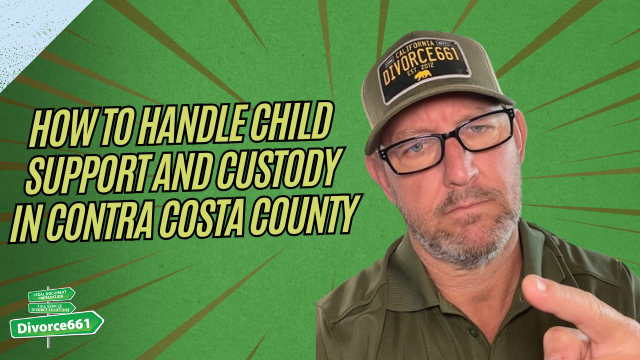How to Modify Child Support Orders in California (Los Angeles Divorce)
Hi, I’m Tim Blankenship with Divorce661. If you already have a child support order in place but your situation has changed, you may be able to modify the amount you’re paying or receiving. This guide explains when a modification is possible in California, how the process works, what paperwork you’ll need, and practical tips to get the best result.
When can you ask to modify child support?
California allows modifications when there’s a significant change in circumstances. The court will not change an order without a valid reason, so it’s important to document the change and provide accurate, up-to-date information.
- Income changes: A substantial increase or decrease in the income of either parent.
- Job loss or reduced hours: Layoffs, furloughs, or an employer reducing your hours can justify a modification.
- Custody or visitation changes: A shift in how much time each parent spends with the child affects support calculations.
- New children or dependents: Having a child from a new relationship can affect available income.
- Extraordinary expenses: New, significant medical or education expenses for the child.
The courts won’t change the order unless there’s a valid reason.
How the modification process works in California
- Run updated calculations: Child support in California is calculated using statewide guideline software. You need current income figures and custody/parenting time info to get an accurate result.
- Prepare the right forms: There are specific forms to request a change, plus declarations and supporting documents that explain why the modification is needed.
- File with the court: Submit your request to the family court that issued the original order.
- Hearing or agreement: The court may schedule a hearing, or the parents can agree to a stipulation and submit it for approval.
- Effective date: If the court grants a modification, the change is generally retroactive to the date you filed the request, which can help prevent or reduce arrears.
Real client example
We recently helped a parent who lost their job and could no longer keep up with support payments. Within a few days we prepared and filed a modification request. The judge lowered the support amount and applied the change retroactive to the filing date. That adjustment let our client catch up and avoid falling behind.
What documents to gather
Having complete and organized paperwork speeds the process and improves your chances of success. Typical documents include:
- Recent pay stubs and a year-to-date earnings statement
- Federal tax returns (usually last 2 years)
- Proof of job loss or reduced hours (termination notice, unemployment filings)
- Current custody orders or parenting-time schedules
- Records of other dependents or new children
- Documentation of extraordinary medical or educational expenses
Common mistakes to avoid
- Waiting too long: File as soon as your circumstances change—modifications are generally retroactive only to the date you filed.
- Using incorrect calculations: Court-approved guideline software must be used for accurate results.
- Incomplete paperwork: Missing documents or unclear declarations can delay or derail a modification request.
- Assuming informal adjustments are binding: Only a signed court order officially changes support obligations.
How Divorce661 can help
At Divorce661 we assist both parents—those paying and those receiving support. Our services include:
- Running court-approved child support calculations using official software
- Preparing the correct forms and supporting declarations
- Fast, accurate filing with the family court
- Flat-fee services so you know the cost up front
- Guidance to protect your financial future
If you think your child support order needs to be changed, don’t wait. Visit divorce661.com to schedule a free consultation and learn your options. We’ll help you prepare the accurate numbers and take the right steps to get the modification you need.
Conclusion
Modifying child support in California is straightforward when you have a significant change in circumstances and the right documentation. Accurate calculations, timely filing, and proper paperwork make a big difference—both in the speed of the process and the outcome. If your income, job, or custody arrangement has changed, reach out for help so you can move forward with confidence.










